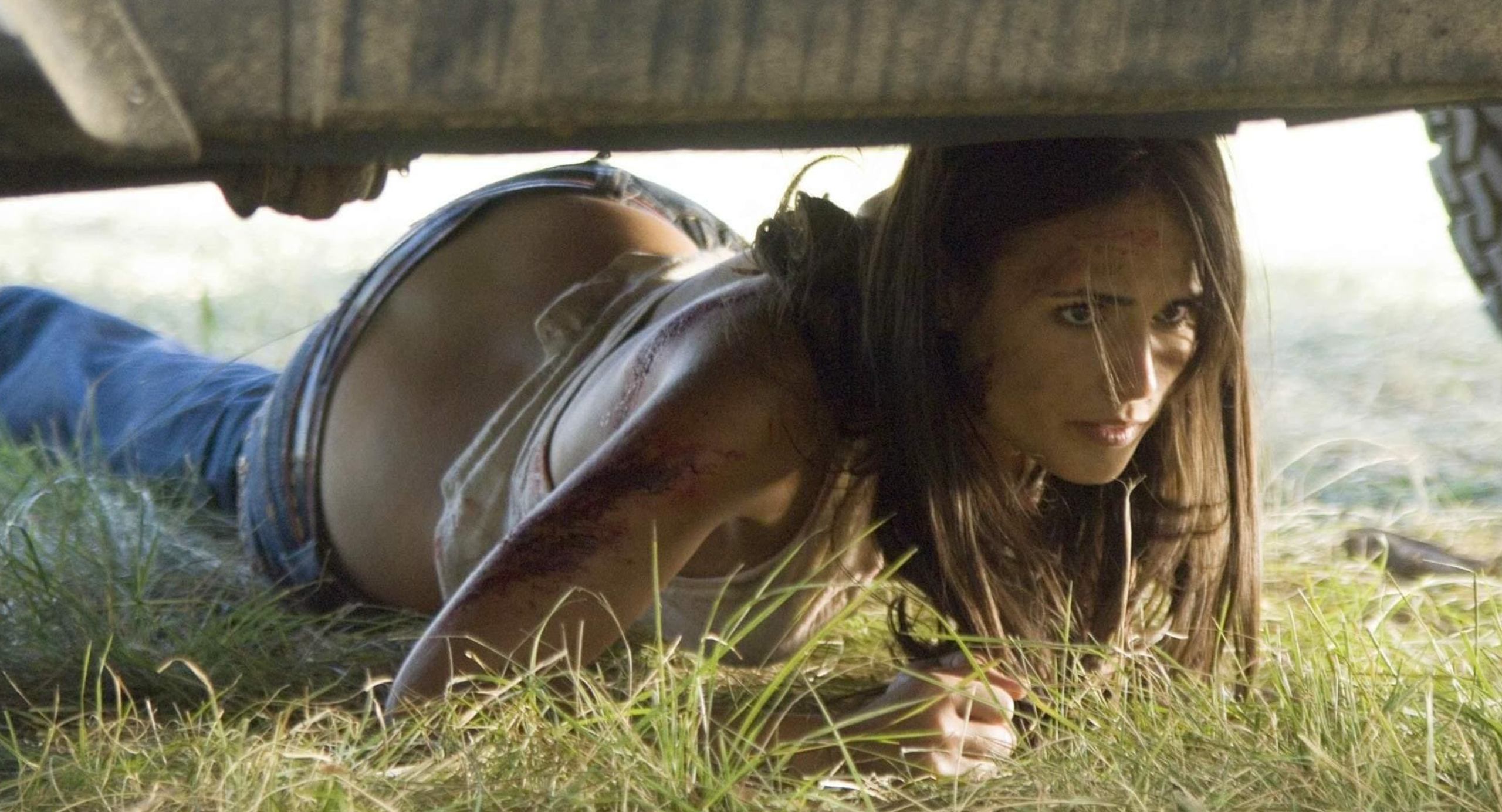The Texas Chainsaw Massacre: The Beginning – Film Review
Published May 2, 2024

The Texas Chainsaw Massacre: The Beginning, directed by Jonathan Liebesman and released in 2006, attempts to delve into the origins of the infamous Leatherface and his cannibalistic family. As a prequel to the 2003 remake of the 1974 classic, it promises to uncover the macabre roots of its central antagonist. Unfortunately, despite some chilling moments and a few effective scares, the film largely fails to justify its existence, offering little beyond gratuitous gore and a rehashed storyline.
Set in 1969, the film follows brothers Eric (Matthew Bomer) and Dean (Taylor Handley), alongside their girlfriends Chrissie (Jordana Brewster) and Bailey (Diora Baird), as they embark on a road trip before Eric is deployed to Vietnam. Their journey is abruptly derailed by a collision with a biker, leading them to cross paths with the sadistic Hewitt family. This encounter sets off a nightmarish sequence of events involving torture, mutilation, and a desperate fight for survival.
The narrative aims to explore the origins of Leatherface, aka Thomas Hewitt (Andrew Bryniarski), portraying his childhood and eventual transformation into a monstrous killer. However, the backstory feels superficial and lacks depth, offering little more than a series of grim vignettes meant to shock rather than illuminate. The film’s attempt to humanize Leatherface by depicting him as a bullied child feels forced and shallow, failing to evoke genuine empathy or understanding.
The characters in The Beginning are mostly archetypal and underdeveloped. Eric and Dean represent the classic sibling dynamic, with Eric as the protective older brother and Dean as the reluctant, conflicted younger one. Their girlfriends, Chrissie and Bailey, serve primarily as victims, with minimal characterization beyond their roles as love interests and objects of terror.
Jordana Brewster’s Chrissie stands out slightly, given more screen time and a semblance of agency as she strives to rescue her friends. Brewster delivers a competent performance, balancing vulnerability and resilience, but is ultimately constrained by the script’s limitations.
R. Lee Ermey reprises his role as Sheriff Hoyt, the sadistic patriarch of the Hewitt family. Ermey’s performance is chilling and effective, embodying malevolence with a twisted sense of authority. However, his character’s relentless cruelty becomes monotonous, lacking the nuance needed to maintain suspense or intrigue.
Andrew Bryniarski as Leatherface brings a physical presence that is undeniably menacing. Yet, the character’s portrayal leans heavily on brute force and grotesque violence, with little insight into his psyche. The film’s attempt to explore his transformation from a troubled child to a remorseless killer is superficial, reducing him to a mere instrument of terror.
Jonathan Liebesman’s direction emphasizes a gritty, visceral aesthetic, aiming to immerse the audience in a world of relentless brutality. The cinematography by Lukas Ettlin uses desaturated colors and handheld camerawork to create a sense of disorientation and unease. While this approach succeeds in crafting a disturbing atmosphere, it often feels overwrought, prioritizing style over substance.
The film’s pacing is uneven, with moments of intense action interspersed with prolonged scenes of torture and suffering. These scenes, intended to heighten tension, instead become repetitive and gratuitous, desensitizing the audience to the horror rather than building suspense.
The special effects and makeup are arguably the film’s strongest aspects. The gore is depicted with unsettling realism, from the visceral wounds inflicted by Leatherface’s chainsaw to the gruesome scenes of dismemberment. The practical effects are commendable in their craftsmanship, achieving a level of authenticity that enhances the film’s horror elements.
However, the relentless focus on graphic violence becomes a double-edged sword. While it caters to fans of extreme horror, it detracts from narrative cohesion and character development, reducing the film to a series of shock tactics rather than a compelling story
The Texas Chainsaw Massacre: The Beginning attempts to explore themes of family, loyalty, and survival, but these are overshadowed by its preoccupation with brutality. The film hints at the impact of war on young men, as seen in Dean’s reluctance to serve in Vietnam, but this subplot is underexplored and ultimately inconsequential.
The tone is relentlessly bleak, with little respite from the onslaught of violence and despair. This grim atmosphere, while appropriate for a horror film, lacks the nuanced tension and psychological depth that distinguish the best entries in the genre. The result is a movie that feels oppressive rather than engaging, leaving the audience exhausted rather than exhilarated.
In conclusion, The Texas Chainsaw Massacre: The Beginning offers little beyond its visceral horror and grim aesthetic. While it provides some effective scares and boasts impressive practical effects, it ultimately fails to justify its existence as a prequel. The characters are underdeveloped, the storyline is superficial, and the relentless focus on gore becomes desensitizing rather than terrifying.
For fans of the franchise and aficionados of extreme horror, the film may hold some appeal. However, for those seeking a compelling narrative or a deeper exploration of Leatherface’s origins, The Beginning is a disappointment. Its potential is squandered in favor of shock value, resulting in a film that is as hollow and unrelenting as the chainsaw at its center.
